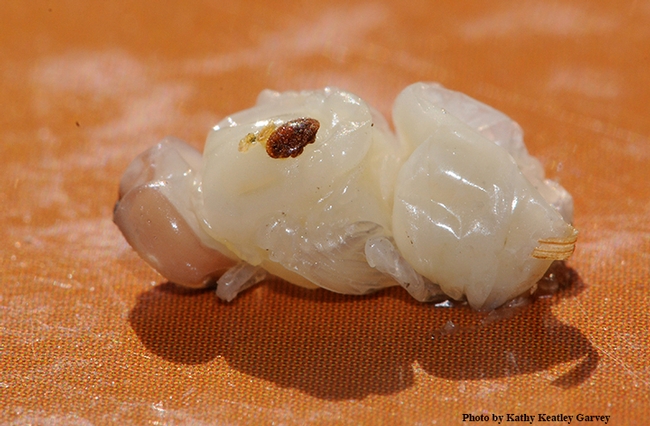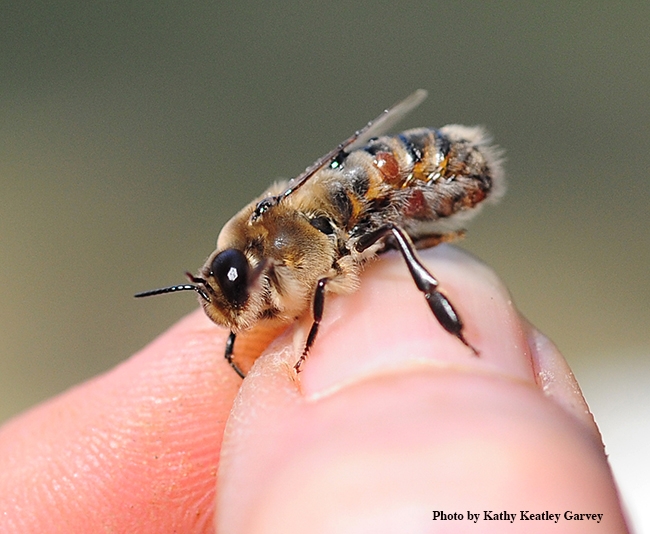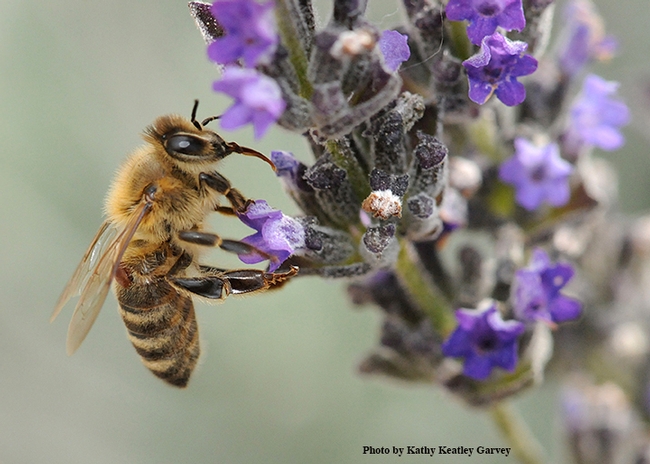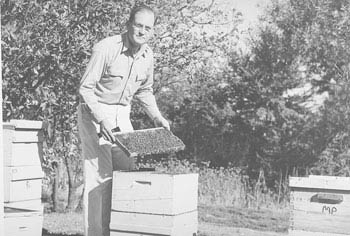- Author: Kathy Keatley Garvey
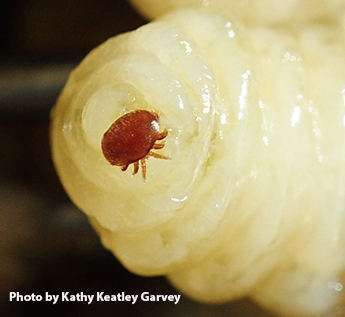
The Deep Look crew filmed the footage of the varroa mites with the assistance of Niño and Joseph Tauzer, manager of the Harry H. Laidlaw Jr. Honey Bee Research Facility, Bee Biology Road. Other segments of the production were filmed elsewhere.
The video was publicly released Oct. 24.
"They really did a great job, just like with the one on bee bread also done in my lab a few years back (2019)," said Niño, who also is the founder and director of the California Master Beekeeper Program. (See "Honey Bees Make Honey...and Bread?")
Varroa mites (Varroa destructor), natives of Asia, are external parasitic mites that feed on and weaken honey bees. They can spread such viruses as the deformed wing virus.
Beekeepers typically describe varroa mites as "Public Enemy No. 1" or as "A Beekeeper's Worst Enemy." In the Deep Look video, host Laura Klivans comments: "Every year, up to half the managed honeybee hives in the United States die from hazards like pesticide exposure, lack of flowers to forage on year-round, and varroa mites...varroa mites are great at sneaking into hives, hiding, and reproducing like mad."
Varroa mites reproduce only in a bee colony. The mites are small--measuring about 1–1.8 mm long and 1.5–2 mm wide--but they are huge to a bee. "It's as if you were carrying around a tick the size of a dinner plate," Klivans says.
Scientists first detected varroa mites in the United States in the 1980s. "They evolved on eastern honeybees, in Asia," Klivans notes. "That's why the western honeybees in the Americas and Europe aren't yet good at defending against them."
Research is underway to breed bees that will better target the mites. "The U.S. Department of Agriculture and private companies are breeding bees that can sniff out varroa mites," according to Deep Look. "When the bees find some, they uncap the cells and interrupt reproduction."
The video also focuses on "the sugar shake," a procedure used to monitor and estimate the number of varroa mites in a bee colony. It involves adding a half of a cup of bees (about 300) from the brood comb to a jar with a mesh lid, dropping in two tablespoons of confectioners' sugar, shaking the jar for 30 seconds to dislodge the mites, and emptying the contents on a tray. The beekeepers then count the number of varroa mites, estimate the severity of infestation, and decide what needs to be done.
Deep Look humorously describes the sugar-coated mites as "frosted varroa mites."
"The U.S. Department of Agriculture and private companies are breeding bees that can sniff out varroa mites," Klivans tells viewers. "When the bees find some, they uncap the cells and interrupt reproduction." Through queen bee insemination, scientists at Purdue and Central State universities are breeding honeybees known as “mite-biters." (See news story)
In addition to Niño and Tauzer, researchers consulted included Adam Finkelstein, VP Queen Bees; Krispn Given, Purdue Universities; Cameron Jack, University of Florida; Jeff Harris, Mississippi State University; Hongmei Li-Byarlay, Central State University; Samuel Ramsey, University of Colorado, Boulder; and Frank Rinkevich, USDA.
Credits include Deep Look producer/writer Gabriela Quirós; cinematographer Josh Cassidy; narrator/writer Laura Klivans; original music Seth Samuel; and editors/motion graphics Gabriela Quirós and Kia Simon.
In 2007, Deep Look filmed bee breeder-geneticist Susan Cobey (now of Washington State University) inseminating bee queens in the Laidlaw lab. At the time, Cobey managed the Laidlaw facility. Also in the video, the late Eric Mussen (1944-2022), Extension apiculturist and member of the UC Davis Department of Entomology and Nematology faculty, discusses colony collapse disorder.
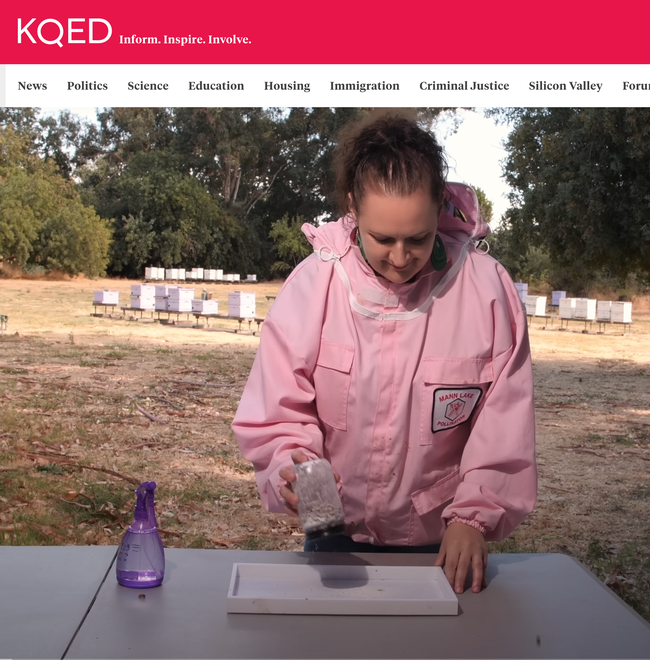
- Author: Kathy Keatley Garvey
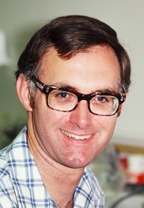
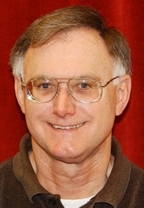
Dr. Mussen, a resident of Davis, was admitted to a local hospital on May 25. He was diagnosed with liver cancer/failure on May 31 and returned to the family home June 1 for hospice care. He passed away the evening of June 3.
“Eric was a giant in the field of apiculture,” said Steve Nadler, professor and chair of the UC Davis Department of Entomology and Nematology. “The impact of his work stretched far beyond California.”
Dr. Mussen, known to all as “Eric,” joined the UC Davis entomology department in 1976. Although he retired in 2014, he continued his many activities until a few weeks prior to his death. For nearly four decades, he drew praise as “the honey bee guru,” “the pulse of the bee industry" and as "the go-to person" when consumers, scientists, researchers, students, and the news media sought answers about honey bees.
“Eric's passing is a huge loss," said longtime colleague Lynn Kimsey, director of the Bohart Museum of Entomology and a UC Davis distinguished professor of entomology. "He was always the go-to person for all things honey bee. He worked happily with hobbyists, commercial beekeepers and anyone just generally interested."
Colleagues described Mussen as the “premier authority on bees and pollination in California, and one of the top beekeeping authorities nationwide,” “a treasure to the beekeeping industry," and "a walking encyclopedia when it comes to honey bees.”
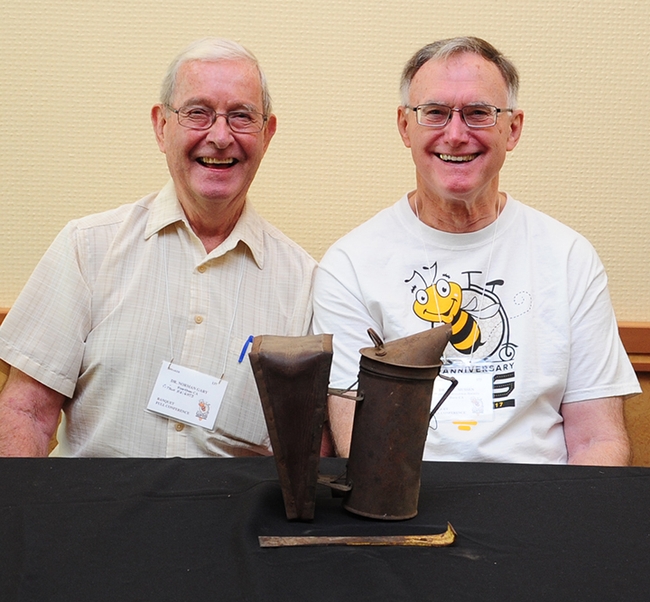
“Eric's career was so productive and exciting that a book would be required to do justice for his many contributions to his profession as extension entomologist specializing in apiculture, better known as beekeeping,” Gary said. “His mission basically was facilitating productive and reciprocal communication between beekeeping researchers at UC Davis, commercial beekeeping as it affects California's vast needs for the pollination of agricultural crops, providing helpful information to hobby beekeepers, and educating the general public concerning honey bees. His great professional successes in all areas have been recognized around the world. He has received numerous awards, especially from the beekeeping industry. He was by far the best Extension apiculturist in this country!”
“In addition to professional duties, he enthusiastically tackled other projects for entomology faculty,” Gary said. “For example, he critically reviewed most of my publications, including scientific papers, books, and bulletins. He worked diligently to help create the Western Apicultural Society and later served as president. (Mussen served six terms as president, the last term in 2017.) I especially appreciated his volunteering to moderate a video that historically summarized and recorded my entire 32-year career at UC Davis. And his tribute would not be complete without mentioning that he was one of my favorite fishing buddies.”
“Eric was proud of his loving wife, Helen, and family (sons Timothy and Christopher and two grandchildren),” Gary said. “His family support was unconditional. He will be sadly missed by everyone.”
Leslie Saul-Gershenz, a UC Davis doctoral alumnus in entomology, praised his kindness and generosity. “I have known Eric for over 30 years and he was the kindest, most supportive human being. He always came to speak at the San Francisco Bee Club to support local beekeepers and was the most generous of colleagues anyone could ever hope for. He was a immense resource of knowledge about honey bees, and I am sure he will be missed by many people across the state of California.”
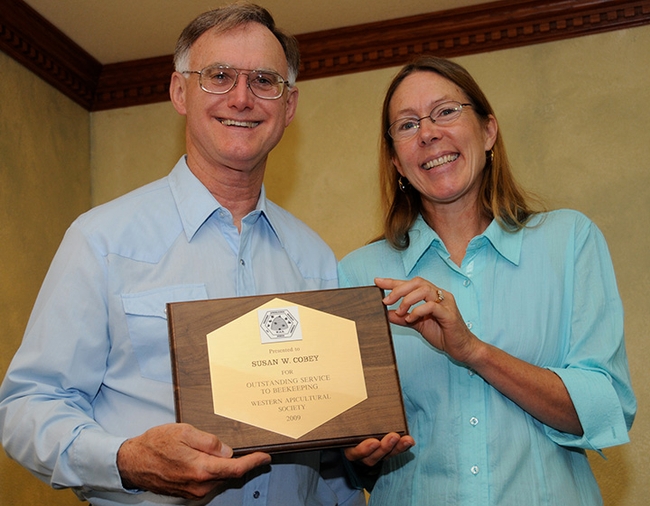
Mussen's longtime friends and colleagues--bee breeder-geneticist Susan Cobey of Washington State University (WSU), a former manager of the Harry H. Laidlaw Jr. Honey Bee Facility, UC Davis, and her husband, Timothy Lawrence, WSU associate professor and county director, WSU Extension, Island County--are heartbroken. “Eric is an icon of the beekeeping industry and beyond, a career shaper, problem solver, the information man who always had an answer or would find one, and, always given with integrity, regardless of the issue, biological or political, to whoever posed the question and need," Cobey said. "His contributions, impact and love from the people he touched will live, continuing to contribute and benefit their lives. His spirit is with us.”
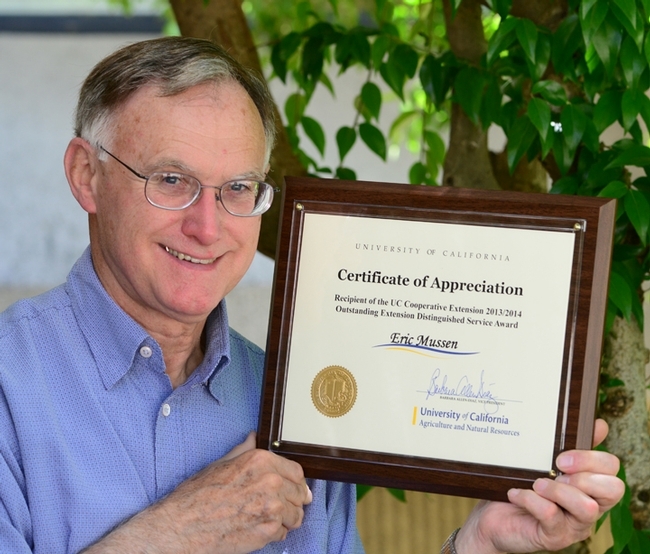
Jackie Park-Burris of Jackie Park-Burris Queens, Inc., Palo Cedro, a leader in the queen bee breeding and beekeeping industries, said she met Eric more than 40 years ago “and from day one he was mentoring me. He was the bee guy for the entire country! Eric was the bee industry's connection to the scientific world. Eric understood both camps and he connected them. Eric had incredible integrity that I have never seen matched. Because of that integrity, beekeepers felt confident in sharing their problems with him, knowing their secrets were safe. Eric always voiced the opinion he felt was right, even if it wasn't the most popular.”
“Eric told me that he looked at the bee industry as his family,” said Park-Burris, a past president of CBSA and a member of the board of directors for more than 20 years. “When my son attended UC Davis, he and Helen made sure Ryan knew he could contact them if he needed anything. Eric even came to a function on campus that my son was in charge of to show support.”

“At last year's CSBA convention. I was awarded the Eric Mussen Distinguished Service Award. Eric sent me an email, congratulating me and told me he could not think of a more qualified person to receive it. It bought a tear to my eye back then, now I will treasure that email even more.” A photo of an early-career Mussen appears on her website.
Patrick “Pat” Heitkam, owner of Heitkam's Honey Bees, Orland, recalled the beekeeping industry's turbulent times in the 1980s. “He was many things and I'm certain no one will fill his position as admirably as he did. The mid-'80s were a turbulent time for commercial beekeepers in California. The advent of tracheal mites and later varroa disrupted our ability to make a living. We were affected in different ways. Passions ran high. Eric maintained the respect of all concerned. I was frustrated, more than once, because he wouldn't tell me what I wanted to hear. He was a scientist, stayed neutral, and only commented when he could be factual. I saw him as the level-headed patriarch of his dysfunctional beekeeping family. This is one of his many attributes. I can't say enough about his value to bee world.”
Randy Oliver of ScientificBeekeeping.com ("beekeeping through the eyes of a biologist") treasured him. "Eric Mussen was not only a longtime friend and collaborator of mine, but a model for me. He was a beloved and exemplary Extension apiculturist, with his engaging presentations, interpreting the science for the benefit of beekeepers. His monthly newsletter was an important source of information to not only California beekeepers, but also to many across the United States and around the world. Eric always made time to happily share information with anyone who asked. I reminisced with his wife Helen shortly before his passing about his joy at doo-wop singing, and I'm sure that that's how this bright light of a man would like to be remembered."
Amina Harris, director of the UC Davis Honey and Pollination Center and co-owner of Z Specialty Food, Inc., commented that "When I first came to California in the early 1980s, I was working with my husband establishing and growing a varietal honey company. One of the first people I met at UC Davis was Eric Mussen, the state apiculturist. Eric was someone who had a lot of answers to a lot of questions! Ever the educator, Eric was well versed in all of the issues of the bee world and readily shared his knowledge with any and everyone who asked. His answers were always down to earth and understandable, with his wry Midwestern sense of humor running underneath. You'd ask a question – and you always got an answer!"
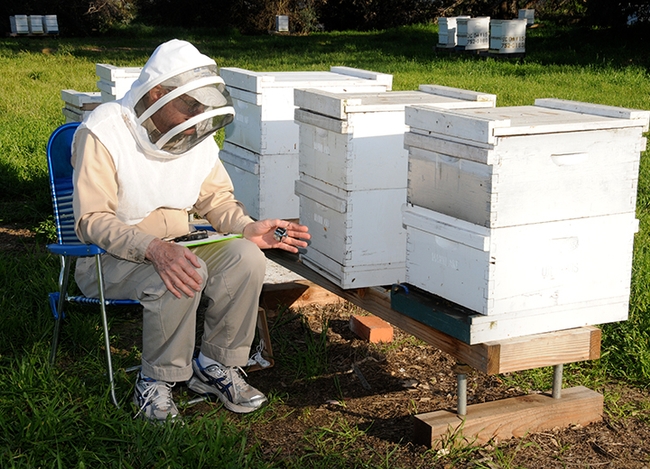
Born May 12, 1944 in Schenectady, N.Y., Mussen received his bachelor's degree in entomology from the University of Massachusetts (after declining an offer to play football at Harvard) and then obtained his master's degree and doctorate in entomology from the University of Minnesota in 1969 and 1975, respectively. Mussen credits his grandfather with sparking his interest in insects. His grandfather, a self-taught naturalist, would take his young grandson to the woods to point out flora and fauna.
Bees became his life, and Mussen thoroughly enjoyed his career. For nearly four decades, Mussen wrote and published the bimonthly newsletter, from the UC Apiaries, and short, topical articles called Bee Briefs, providing beekeepers with practical information on all aspects of beekeeping. His research focused on managing honey bees and wild bees for maximum field production, while minimizing pesticide damage to pollinator populations.
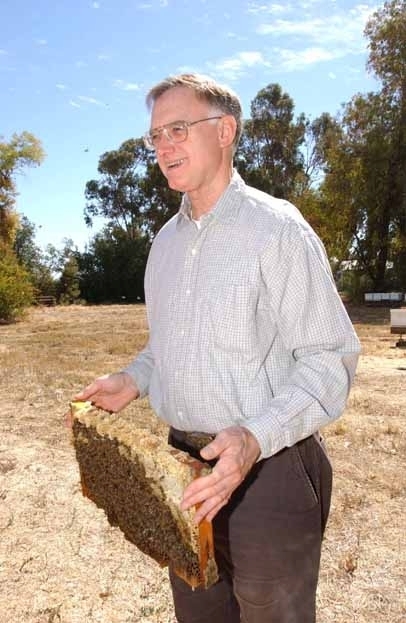
A favorite among the news media for his bee expertise and personality, Mussen appeared on the Lehrer Hour, BBC, Good Morning America, National Public Radio (Science Friday) and other major news outlets, and was quoted by the New York Times, Boston Globe, and Los Angeles Times, among others.
Highly honored by his peers, Mussen received the 2006 California Beekeeper of the Year award; the American Association of Professional Apiculturists' 2007 Award of Excellence in Extension Apiculture; the 2008 Distinguished Achievement Award in Extension from the Pacific Branch of the Entomological Society of America; the 2010 statewide Pedro Ilic Outstanding Agricultural Educator; and was a member of the UC Davis Bee Team that won the 2013 team award from the Pacific Branch of the Entomological Society of America.
Among his scores of awards: the 2013-14 Distinguished Service Award for Outstanding Extension from the UC Agriculture and Natural Resources (UC ANR) and the 2013 Alexander Hodson Graduate Alumni Award from his alma mater, the University of Minnesota.
Gene Brandi, the 2018 president of the American Beekeeping Federation, remembers presenting him with the prestigious Founders' Award from the Foundation for the Preservation of Honey Bees at the 75th annual American Beekeeping Federation conference in Reno. "Eric received a well-deserved rousing standing ovation!” said Brandi, extolling him as "an outstanding liaison between the academic world of apiculture and real-world beekeeping and crop pollination."
"Eric was a legend in the beekeeping world who was always willing to go the extra mile to help beekeepers and bee industry organizations deal with issues pertaining to honey bee health, regulations, and various threats to the industry," Brandi said. "He also helped agricultural organizations, government officials, and the general public better understand the value of honey bees to the world. Eric was a great advocate for the honey bee and beekeepers. He was truly a national treasure.
"Eric served on the California State Beekeepers Association Board of Directors for 39 years as apiculturist, but he also was the parliamentarian for many years, and due to his long tenure, was quite the historian as well," Brandi added. "He co-founded the Western Apicultural Society and served as president for six terms. He founded the American Association of Professional Apiculturists and was either president of secretary/treasurer for the first ten years."
"In addition to his work with the aforementioned organizations, Eric was the UC Honey Bee Liaison to California Department of Food and Agriculture, California Department of Pesticide Regulation, EPA, California Farm Bureau Federation, Almond Board of California, National Honey Board, California Bee Breeders' Association, and others. Eric was always willing to help the beekeeping industry by testifying at hearings or writing letters to support the bee industry on various issues. He received many awards from a number of organizations, but the ones with which I am most familiar are the California State Beekeepers Association Distinguished Service Award as well as the Beekeeper of the Year Award. The Foundation for the Preservation of Honey Bees honored Eric in 2018 with the coveted Founders; Award.
Brandi related that "Eric also conducted a number of research projects over the years including research on sacbrood virus, effects of medfly sprays on honey bees, effects of antibiotics of honey bee brood, potential of Neem as a varroa control, effects of selected fungicides on honey bee brood, effects of antibiotics, and effects of high-fructose corn syrup on packaged bee development. Eric's "From the UC Apiaries" newsletter was a renowned publication which contained valuable information about current events in the beekeeping world which beekeepers needed to know. There is so much more that can be said about Eric and his many contributions to the beekeeping world."
When Mussen was nominated (and received) the 2013-14 Distinguished Service Award for Outstanding Extension from the UC Agriculture and Natural Resources (UC ANR), MacArthur Genus Awardee Professor Marla Spivak, Distinguished McKnight University Professor Apiculture/Social Insects at the University of Minnesota, wrote: "Without question, Eric is the No. 1 Extension person dealing with honey bees in the nation, if not the world. Research colleagues, beekeepers and the public are all very lucky to have him.”
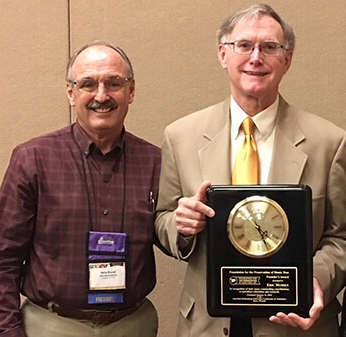
Mussen's team of nominators singled him out for his “amazing knowledge of bees, his excellent communication skills in a diverse clientele, including researchers, Extension personnel, legislators, commodity boards, grower organizations, pesticide regulators, students, news media, and beekeeping associations at the national, state and local levels; his eagerness to help everyone, no matter the age or stature or expertise, from an inquiring 4-H'er to a beginning beekeeper to a commercial beekeeper; and his ability to translate complicated research in lay terms.” He presented multiple talks to every beekeeping association in California, and spoke at a variety of events, including pollinator workshops, animal biology classes, UC events, and fairs and festivals.
The nominators lauded him for “his valuable research, which includes papers on antibiotics to control American foulbrood; fungicide toxicity in the almond orchards; the effect of light brown apple moth mating pheromone on honey bees; the effects of high fructose corn syrup and probiotics on bee colonies; and the invasion and behavior of Africanized bees. He was often consulted on colony collapse disorder and bee nutrition.”
Overall, Mussen was known as "a well-respected, well-liked, honest, and unflappable person with a delightful sense of humor."
Valeri Strachan-Severson of Strachan Apiaries, Inc., Yuba City, producer of New World Carniolan queen bees, treasured his advice. "After my dad, Don Strachan, passed away, I made a pest of myself contacting Eric for advice. He never made me feel like I was asking dumb questions and always had the answers. Sometimes he'd say he'll get back to me if he wasn't sure, and he always did. He was an encyclopedia of apiary knowledge. I'll miss him. He was seriously one of a kind."
Mussen was a longtime board member of the California State Beekeepers' Association and a consultant for the Almond Board of California. He co-founded the Western Apicultural Society, serving six terms as president, the last during the 40th anniversary conference at UC Davis in 2017. He also was involved in the formation of the American Association of Professional Apiculturists and held the offices of president or treasurer of that association for many years. He was a scientific advisor to the UC Davis Honey and Pollination Center.
Mussen was instrumental in the development of the Almond Board of California's Honey Bee Best Management Practices for Almonds. The Almond Board honored him with a service award, describing him as being an “authoritative and trusted source for guidance on research, technical, and practical problem solving and issues facing both industries.” Shortly after he retired, both the CSBA and WAS created an Eric Mussen Award to present to their outstanding members.
“Eric is a worldwide authority on honey bees, but no problem is too small and no question too involved for him to answer,” said the late Extension entomologist Larry Godfrey prior to Mussen's retirement. “He devotes his research and extension activities to the improvement of honey bee health and honey bee colony management practices. Eric helps growers, consumers, UC Farm Advisors, agricultural commissioners, scientists, beekeepers, researchers, pesticide regulators, 4-H'ers, and state and national agricultural and apicultural organizations. He ignites their interest in maintaining the health of bees, cultivates their friendship, and generously gives of his time and intellect.”
William Hutchison, professor and head of the Department of Entomology at the University of Minnesota, who presented him with the 2013 Alexander Hodson Graduate Alumni Award, related at the ceremony that Mussen tackled "many new challenges–mites, diseases, and Africanized honey bees, to name a few–to enhance the pollination success of California's diverse agricultural cropping systems, with considerable emphasis on almonds. In brief, he is in demand, and he continues to be a primary source for objective information on honey bee health and pollination in California."
In his retirement years--in between his family commitments and his hobbies of birding and singing doo-wop with a local group--Mussen not only served as the 2017 president of the Western Apicultural Society but doubled as the program chair at the UC Davis conference. He reviewed funding proposals for Project Apis m., which makes funding decisions and handles the funds for the National Honey Board and other entities; and served on the scientific review panel for the Bee Informed Partnership organization, which reviews funding requests of tech teams. He was a scientific advisor to the UC Davis Honey and Pollination Center.
"I am basically all pro-bee,” Mussen told the American Bee Journal in a two-part feature story published in September 2011. “Whatever I can do for bees, I do it...It doesn't matter whether there is one hive in the backyard or 15,000 colonies. Bees are bees and the bees' needs are the bees' needs.”
Celebration of Life. A Celebration of Life is planned from 4 to 6 p.m., Sunday, Aug. 28 in the Putah Creek Lodge, UC Davis campus. RSVP here (note: attendance is now closed). For those unable to attend, a live webinar will be produced by UC Davis distinguished professor Walter Leal of the Department of Molecular and Cellular Biology, and a former chair of the Department of Entomology. Registration is underway here at https://bit.ly/3czl5Am. It also will be on YouTube.
Family and friends suggest memorial contributions be made to the California State 4-H Beekeeping Program, with a note, "Eric Mussen Memorial Fund." Mary Ciriceillo, director of development for the UC Agriculture and Natural Resources, said checks may be made out to the California 4-H Foundation and mailed to:
- Take Interstate 80 to Highway 113 north.
- Take the Hutchison exit. Head east on Hutchison Drive.
- Turn right onto La Rue Road. Follow to Garrod Drive.
- Turn right on to Garrod Drive.
- Follow until you come to the left turn only lane, into the parking lot. Turn left into the parking lot.
- The closest parking spots to access the lodge would be in the Far East corner of the parking lot. The lot is shaped like a L.
- Campus map: https://campusmap.ucdavis.edu/
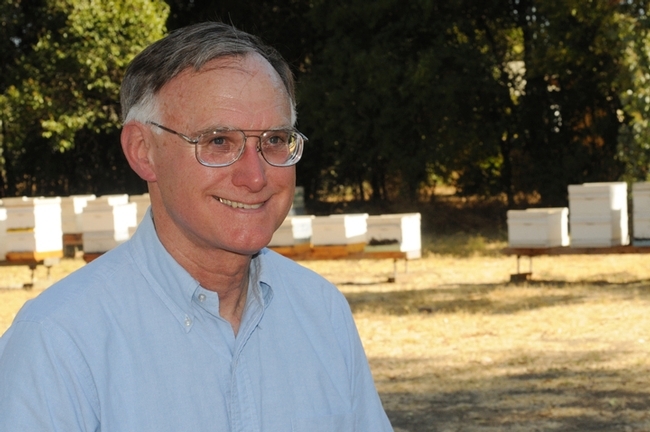

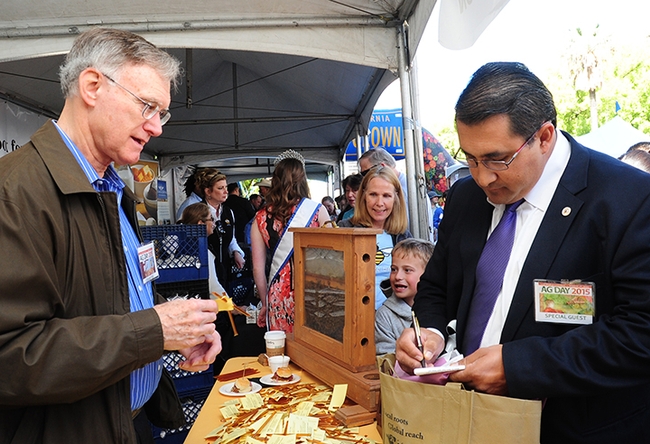
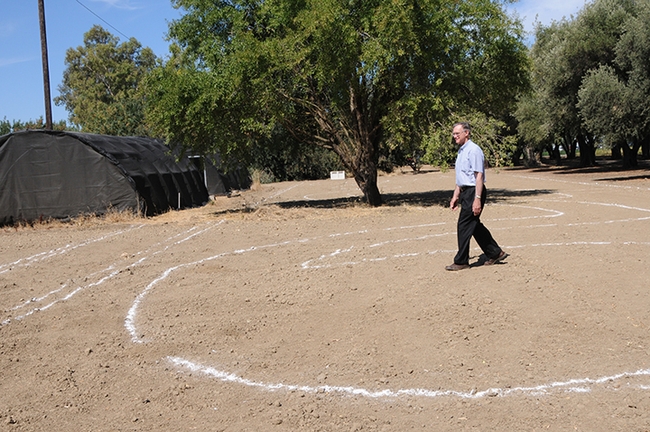


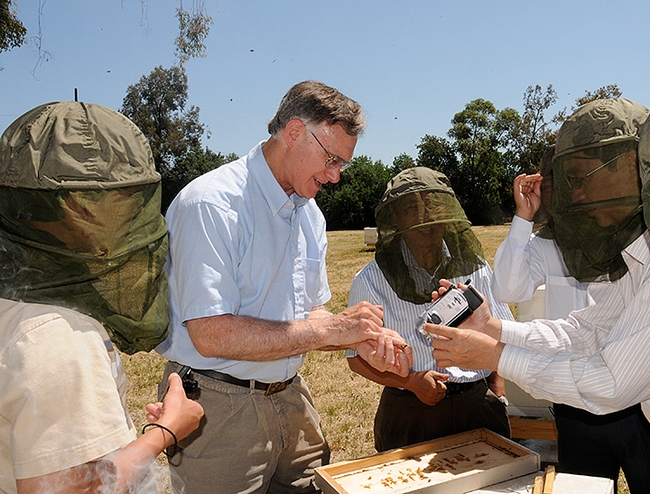
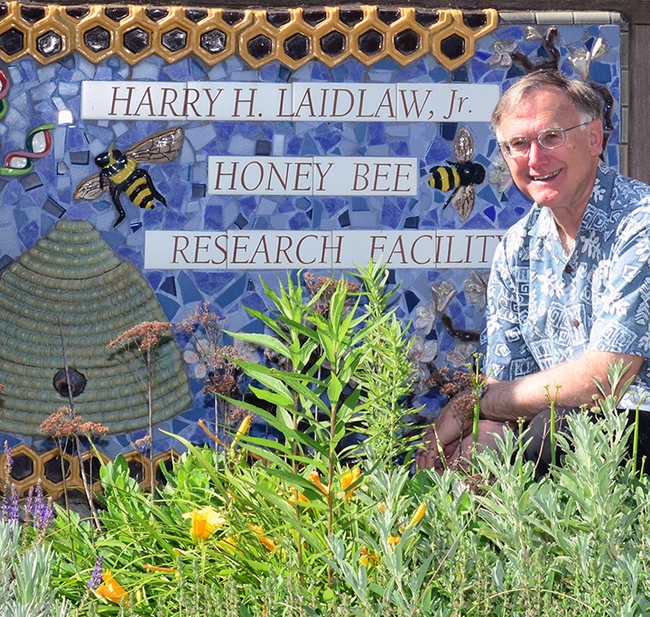

- Author: Kathy Keatley Garvey
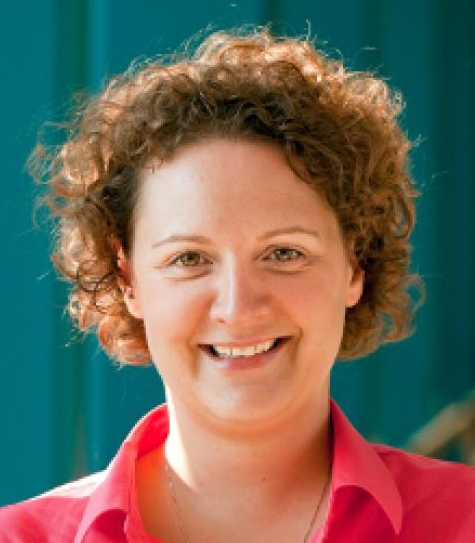
Niño, known internationally for her expertise on honey bee queen biology, chemical ecology, and genomics, joined the faculty in September of 2014 and maintains laboratories and offices in Briggs Hall and at the Harry H. Laidlaw Jr. Honey Bee Research Facility.
Niño serves as the director of the California Master Beekeeper Program (CAMBP), which she launched in 2016. The California Master Beekeeper Program is a continuous train-the-trainer effort. CAMBP's vision is to train beekeepers to effectively communicate the importance of honey bees and other pollinators within their communities, serve as mentors for other beekeepers, and become the informational conduit between the beekeeping communities throughout the state and UCCE staff.
Niño is also the faculty director of the Häagen-Dazs Honey Bee Haven, the department's half-acre educational bee garden located next to the Laidlaw facility, which serves as the outdoor classroom for the Pollinator Education Program, lovingly known as PEP.
“My research interests are fluid and designed to address immediate needs of various agriculture stakeholder groups,” she writes on her website. “Projects encompass both basic and applied approaches to understanding and improving honey bee health and particularly honey bee queen health. Ongoing research projects include understanding queen mating and reproductive processes, discovery and evaluation of novel biopesticides for efficacy against varroa mites, and evaluating orchard management practices with a goal of improving honey bee health. Some of our more fun projects revolve around precision beekeeping and investigate the use of cutting edge technologies to make beekeeping more efficient and sustainable.”
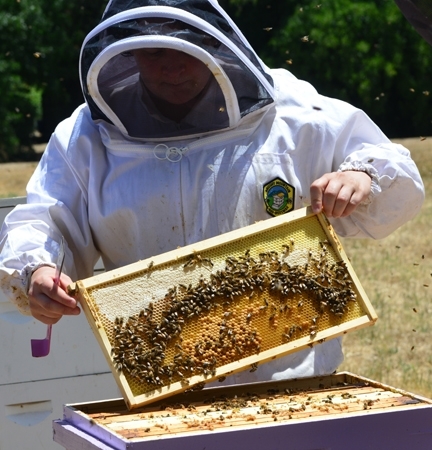
Niño says she “greatly enjoys working with the community and especially with children. To ensure that our future researchers, agriculture leaders and innovators and future voters understand the importance of honey bees and other pollinators to our agroecosystems.”
“Our Pollinator Education Program at the Häagen Dazs Honey Bee Haven garden has been working with the Farms of Amador County to serve third grade students and we are planning on expanding our efforts in the near future and as the pandemic hopefully resolves.”
Niño received her bachelor's degree in animal science from Cornell University in 2003; her master's degree in entomology at North Carolina State University in 2006; and her doctorate at Pennsylvania State University (PSU) in 2012. She served as a postdoctoral fellow, funded by the U.S. Department of Agriculture's National Institute of Food and Agriculture (USDA-NIFA), as a member of the PSU Center for Pollinator Research.
Niño has a varied entomology background. While working on her bachelor's degree at Cornell, she was involved in studies on darkling beetle control in poultry houses, pan-trapped horse flies, and surveyed mosquitoes in New York state. While working toward her master's degree at North Carolina State University, she studied dung beetle nutrient cycling and its effect on grass growth, effects of methoprene (insect grown regular) on dung beetles in field and laboratory settings, and assisted in a workshop on forensic entomology.
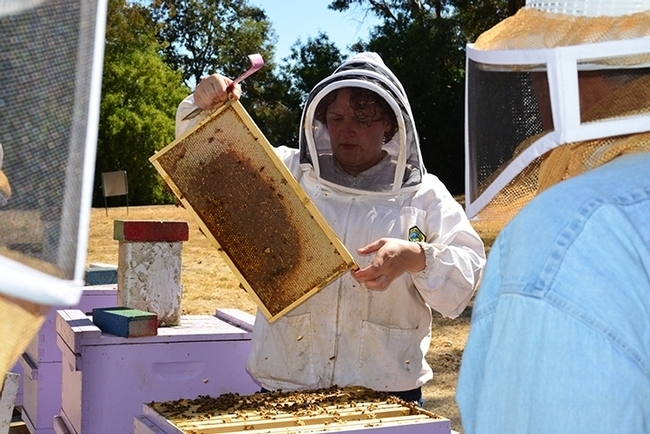
- Author: Kathy Keatley Garvey
(Collaborative history of the UC Davis bee biology program.)
George Haymaker Vansell (1892-1954) was a student at UC Davis who eventually helped with the instruction of entomology and apiculture beginning in 1920 and ending in 1931. In 1922 he became the first instructor to establish residence in Davis. This marked a turning point for entomology at UC Davis and reflected the growing popularity and importance of teaching in the discipline. Vansell's appointment was “Instructor in Entomology” as a U.S. Department of Agriculture (USDA) employee in the Davis Experiment Station.
In October of 1931 Vansell published the first edition of “Nectar and Pollen Plants of California (Bulletin 517, through UC Berkeley). That publication was later revised by Vansell and Eckert in 1941. Vansell also took an early interest in reports of colony poisoning by California buckeye (Aesculus californica Nuttall). He published the early UC Berkeley Agricultural Experiment station Circular 301, titled “Buckeye Poisoning of the Honey Bee,” in 1926. As a co-author with Frank E. Todd (USDA Bureau of Entomology), they generated two publications in 1932: “Data concerning one method of apiary management for use in the California buckeye area” and “Resistance of Hybrid Honeybee to a Plant Poison in California.”
In 1936 Vansell was an author on “A Search for a Method of Producing Honey in the Poisonous Buckeye Area in California,” in conjunction with E.L. Sechrist and Frank E. Todd, who were with the Bureau of Entomology with the USDA. The same year, Vansell joined C.E. Burnside of the USDA Bureau of Entomology and Plant Quarantine to publish “Plant Poisoning of Bees,” reporting national and international reports of bee poisonings. In 1940, Vansell teamed with William G. Watkins and Lee F. Hosbrook to publish another combined UC Berkeley and USDA report on the topic: “The Distribution of California Buckeye in the Sierra Nevada in Relation to Honey Production.” The publication contained a list of “Plants in the Sierra Nevada Providing Nectar, Pollen, or Honeydew, with their Elevation and Blossoming Period” as well as 18 local maps of the natural distribution of buckeye plants.
Vansell conducted additional research on fruit tree pollination at the USDA Pacific States Bee Culture Laboratory, Davis, California. Vansell passed away unexpectedly in his lab in 1954. A student scholarship in the Department of Entomology and Nematology bears his name.
Frank Edward Todd (1895 - 1969) was assigned to the USDA Pacific States Bee Culture Laboratory at UC Davis from 1931 to 1942. He served as head of the USDA apiculture research branch until retirement in 1965. Following his retirement, he was affiliated with UC Davis Bee Biology during the 1960s and ‘70s when he modified Norman Gary's original device and claimed the well-known “Todd Dead Bee Trap” that still is used in honey bee poisoning research.
Edward Lloyd Sechrist (1873 - 1953) was an associate agriculturist in the USDA Office of Bee Culture. Sechrist published “Transferring bees to modern hives” (Farmers' Bulletin 961) in 1918. Sechrist apparently was the first to propose: United States standards for honey: Recommended by the United States Department of Agriculture (Department circular / Unites States Department of Agriculture) in 1927. He published a “Preliminary Report on Apiary Organization and Honey Production in the Intermountain States in 1928.”
In 1930 Sechrist conducted studies on how much weight a honey bee colony gained and lost on a daily basis and reported that a colony could increase in weight by 20 pounds a day. He wrote the textbook “Honey Getting” in 1944. “Amateur Beekeeping” appears to have undergone revision in 1955, and reprinted in ‘58, '71, and ‘76. Sechrist conducted some of his studies with personnel from the Davis bee lab.
John Edward Eckert (1895-1975) joined UC Davis as a professor of entomology and apiculture in 1931 and eventually assumed the title of “Local Chairman” – this was the title of the administrator of the department up to 1934 when the official title of vice chairman, Berkeley-Davis, was established. Eckert finished his appointment as department chairman in 1946. As a master's student, Eckert published a paper on “The Flight Range of the Honey Bee” that remains the definitive statement on the topic. Eckert conducted early studies on effects of pesticides on honey bees and worked very closely with the beekeeping industry on matters of colony management and beekeeping politics. Eckert also conducted studies on potential resistance to buckeye poisoning by various races, and crosses between races, of Caucasian, Carniolan, and Italian stocks. The results were published in 1933 as “Buckeye Poisoning of the Honeybee – A Progress Report.”
Eckert published many articles on beekeeping, edited a California column in "Gleanings in Bee Culture" for decades, and he published the first iteration of “Beekeeping in California, Circular 100,” in 1936. This publication is the basis for many revisions and title changes by various authors over the decades, including one version Eckert titled: “A Handbook on Beekeeping for California (Manual 15, 1954).” He also published a more concise, four-page publication titled “The Home Apiary” in 1943.
Harry Hyde Laidlaw, Jr. (1907-2003) joined UC Davis as a Professor of Apiculture in 1947. His research resulted in his being called the “father of honey bee genetics” and he was the first to develop a functional instrument for artificially inseminating queen honey bees. Laidlaw pioneered research on visible mutants of honey bees (including eye colors, wing lengths, hairlessness, and pigment-free ((blind)) drones). His genetic stocks of eye color mutants led to determination of biochemical pathways for development of eye colors and early genetic mapping of the honey bee genome. Laidlaw garnered campus, national and international awards for his research efforts. His service to the university included being appointed the first dean for research in the UC Davis College of Agriculture. The current Bee Biology Facility is named for Laidlaw, and his family established an endowment fund (student scholarships) in his name. (See In Memoriam)
Norman E. Gary (1933- ) joined UC Davis as a professor of apiculture in 1962. In the 1960s he spearheaded grant funding to construct a new bee research facility and designed our current Bee Biology facility, now the Harry H. Laidlaw Jr. Honey Bee Research Facility. Gary specialized in honey bee behavior. He did the most comprehensive research on flight range and dynamic distribution of foraging honey bees in almond orchards and various field crops by developing a novel method to recover magnetically approximately 90 percent of foragers tagged with ferrous metal ID tags, enabling the highest recapture percentage ever recorded for any insect species. During honey bee mating behavior research he was first to identify queen mating pheromones and also first to observe, describe, and photograph aerial mating behavior of queens and drones, develop aerial traps for drones, and make an award winning documentary film on mating behavior. He designed an efficient hive entrance dead bee trap that enables accurate monitoring of bee mortality inside the hive, e.g., bees killed by pesticides and diseases.
Gary led a research team to determine possible effects of microwaves on honey bees and invertebrates, as a part of the Solar Power Satellite project. In the 1970s he spearheaded the organization of the Western Apicultural Society and served as its first president. Since his retirement in 1994, Gary has written chapters for several honey bee text books as well as a book (“Honey Bee Hobbyist: The Care and Keeping of Bees,” 2010). For more than 40 years, he consulted with TV and film companies as a bee wrangler and stunt coordinator for producing educational documentaries and entertaining productions, resulting in 17 movies, 6 commercials, and more than 50 television programs. He is also a lifetime professional musician, performing and recording on clarinet, tenor and alto saxophones, and flute.
Robbin W. Thorp (1933 - 2019) joined UC Davis as a professor of apiculture in 1964. Thorp specialized in pollination behavior of honey bee and native bees. Thorp devoted a good deal of time to almond pollination and contributed information that still is applicable in this national, Herculean, single-crop pollination effort. But, he also maintained an interest in non-Apis bees. He published the book “Bumble Bees and Cuckoo Bumble Bees of California (Hymenoptera: Apidae) in the Bulletin of the California Insect Survey, with Lorry Dunning in 1983. As emeritus professor (retired 1994), Thorp continued to work avidly with native bees until his death on June 7, 2019. In 2014, he co-authored a“Bumble Bees of North America: An Identification Guide” (Princeton University Press) and another titled: “California Bees and Blooms, a Guide for Gardeners and Naturalists" (Heyday).
Ward Stanger (1913-2000) shifted his extension responsibilities from Extension entomologist to Extension apiculturist when the honey bee researchers were being overwhelmed with requests for beekeeping information during the age of counter culturalism in the 1960s and ‘70s. Stanger was readily adopted by the beekeeping industry as a spokesman for their concerns. In 1971 he joined forces with the Davis researchers and California Department of Food and Agriculture (CDFA) representatives to publish “Manual 42: Fundamentals of California Beekeeping.” This publication was revised and retitled “Beekeeping in California,” but the basic information remains pretty similar to the original. In 1969 Stanger co-authored, with Dr. William C. Roberts from what is now known as the USDA-ARS Baton Rouge Bee Lab, an article in the American Bee Journal titled “Survey of the Package Bee and Queen Industry.” It was the first comparison of how the northern California and southeastern Gulf States bee breeders conducted their businesses. Stanger became involved in research of honey bee nutrition, since most honey bee colonies kept commercially in California require some supplemental feed to increase brood rearing for various reasons. Together with Harry Laidlaw, Stanger fed 40 colonies feeds containing various concentrations of pollen, Wheast, and sugar syrup. The results: “Supplemental Feeding of Honeybees” were published the year he retired from the university, 1974.
Christine Y. S. Peng (1944- ) joined the Department of Entomology as a professor of apiculture in 1975. Peng was an insect physiologist and she devoted her studies to searching for solutions to honey bee problems. She spent a good deal of time searching for a replacement antibiotic for oxytetracycline hydrochloride (Terramycin®) when American foulbrood was becoming resistant. With Drs. Terrance Leighton and Eric Mussen, Peng selected tylosin as the top candidate, which is being used internationally today. Peng also provided considerable knowledge on the topic of honey bee nutrition, including determining the best times of the year to provide supplemental feed to the colonies. Peng retired from the University in 2005.
Eric Carnes Mussen (1944- ) joined University Cooperative Extension as extension apiculturist in 1976. Mussen became involved in many different honey bee studies, often in conjunction with one of the department Professors. He became fully integrated into the world of non-commercial and commercial beekeeping. As his experiences broadened, he became a recognizable voice for beekeeping matters with county farm advisors, agricultural organizations, California agencies, NGOs, and the EPA. Mussen retired in 2014, but still remains in contact with industry matters.
Robert E. Page, Jr. (1949 - ) completed his doctorate in entomology at UC Davis, with a strong emphasis on insect genetics. After a couple years as professor at Ohio State University, Page returned to UC Davis in 1989 to further his research in honey bee genetics. During his 15 years at UC Davis, including an appointment as department chairman, and 11 more at Arizona State University (ASU), Page published hundreds of papers, four books, and led to the discovery of many fundamental tenets of honey bee behavior and population genetics and the focus of his current research is on the evolution of complex social behavior. Using the honey bee as a model, Dr. Page has dissected their complex foraging division of labor at all levels of biological organization from gene networks to complex social interactions. Page served as Foundation Chair of Life Sciences at ASU and provost (now emeritus) at Arizona State University.
Current Faculty Members
Neal Williams joined the department in 2009 as an assistant professor, coming from an exemplary background in college teaching to a position that would allow more creative research. Williams is now professor of entomology and a core faculty member with the Agricultural Sustainability Institute. His work ranges from basic research in bee biology and pollination to applied research on native bee conservation and crop pollination. He investigates the evolution and ecology of pollen specialization (oligolecty) by bees and how such specialists contribute to plant reproduction compared to generalists (polyleges). He also explores the role of habitat connectivity for the persistence of bees in agri-natural landscapes and how pollination service by native bee species is affected by land use change and human disturbance. Finally, he is working to develop native plant mixtures to bolster populations of the honey bee and wild bee species and promote sustainable pollination in different agricultural systems.
Brian Ricky Johnson joined the department as a bee behaviorist in 2012. Johnson continues studies on the genetics, behavior, evolution, and health of honey bees. Approaches to honey bee health studies incorporate a combination of genetics, epidemiology, and physiological approaches. His current work focuses on the evolution and genetic basis of social behavior using comparative and functional genomics, task allocation using behavioral and theoretical approaches, and honey bee health using a combination of genetics, epidemiology, and physiological approaches. He also is attempting to better determine where genes from Africanized honey bees have gained entry into the regional bee populations around the state.
Elina Lastro Niño joined the department as Extension apiculturist in 2014. She arrived with a very strong background in bees and beekeeping, and she immediately began visiting beekeepers throughout the state to become familiar with California beekeeping. Niño devotes her major research focus to queen honey bees and the physiological changes they undergo as they mature, become inseminated, and begin laying eggs. But she also is concerned about the pesticide problems vexing honey bee colonies and is conducting research in that area. She established the California Master Beekeeper Program in 2016. She is the bee biology program's third Extension apiculturist and the only Extension apiculturist in California.
(Editor's Note: See history of the UC Davis Department of Entomology and Nematology)
- Author: Kathy Keatley Garvey
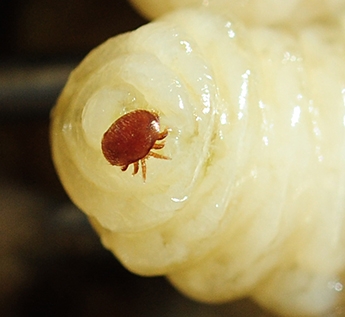
How can you monitor, mitigate and manage them?
Extension apiculturist Elina Lastro Niño and her lab are hosting a short course on "Managing Varroa" from 9 a.m. to 4 p.m., Sunday, Oct. 13 at the Harry H. Laidlaw Jr. Honey Bee Research Facility on Bee Biology Road, University of California, Davis.
"Current beekeeping challenges call for all beekeepers to have a solid understanding of varroa mite biology and management approaches," said Niño, in describing the course. "We will dive deeper into understanding varroa biology and will devote majority of the time to discussing pros and cons of various means to monitor, mitigate, and manage this crucial honey bee pest."
The course, limited to 20 participants, will cover varroa biology, treatment options and chemical-free options. Participants are to bring their bee veil or suit. The $200 registration fee covers the cost of course materials, lunch and refreshments. The last day to register is Monday, Oct. 7. Click here to register.
The eight-legged varroa mite (Varroa destructor) is an external parasite that attacks and feeds on honey bees. Originating in Asia, it is now found throughout most of the world. It arrived in Japan and the Soviet Union in the early 1960s and South America in the 1970s. From the 1970s to 1980s, it spread to South America, Poland, France, Switzerland, Spain, and Portugal. The pest was first detected in the United States in 1987, in Canada in 1989, and in 1992 in the United Kingdom. It has since spread to Ireland, New Zealand and Hawaii, but to date, has not been found in Australia.
The female is reddish brown, while the male is white. They measure 1–1.8 mm long and 1.5–2 mm wide.
For more information on the course, contact Wendy Mather at wmather@ucdavis.edu. Mather serves as the program manager of the UC Davis-based California Master Beekeeper Program, directed by Niño. The program uses science-based information to educate stewards and ambassadors for honey bees and beekeeping.
